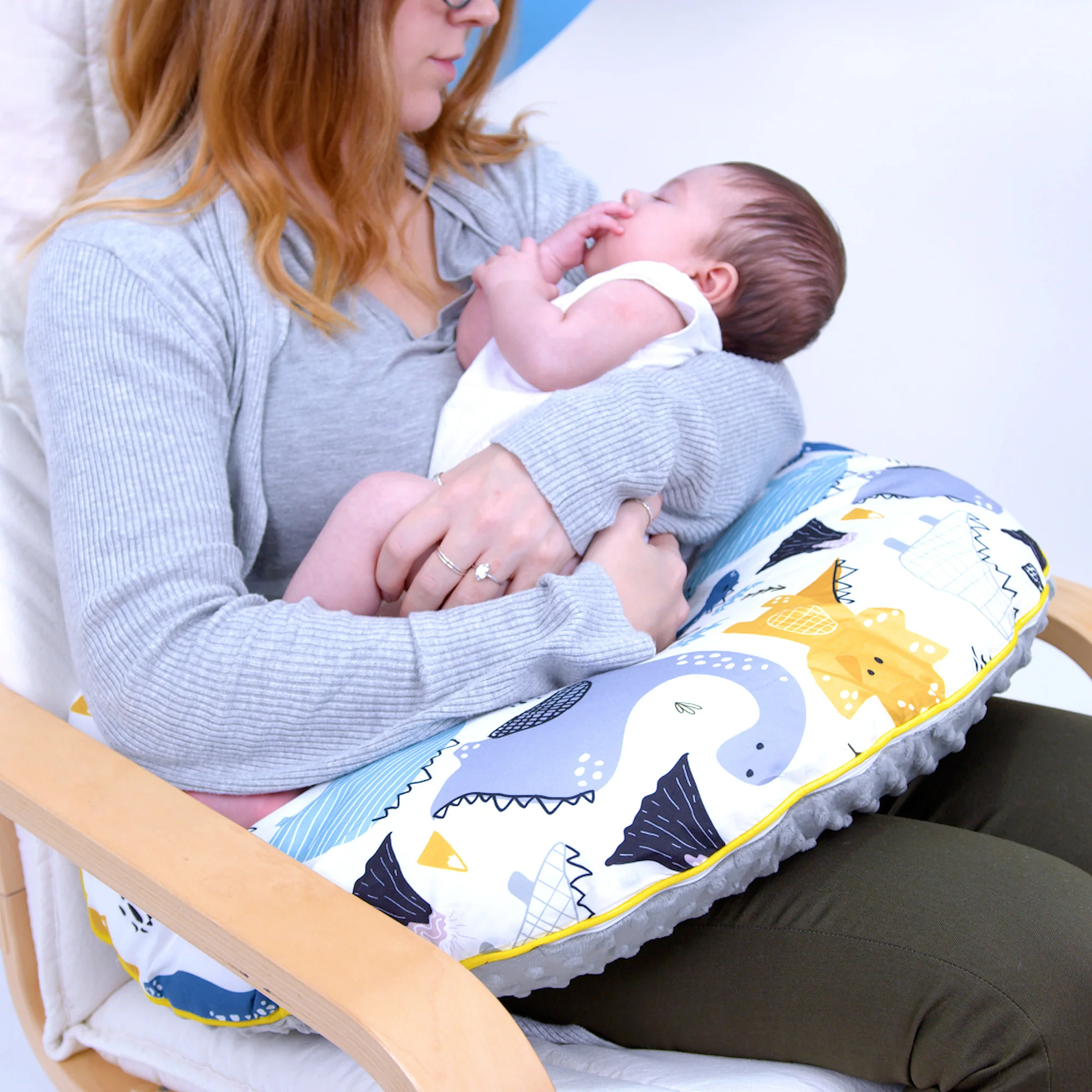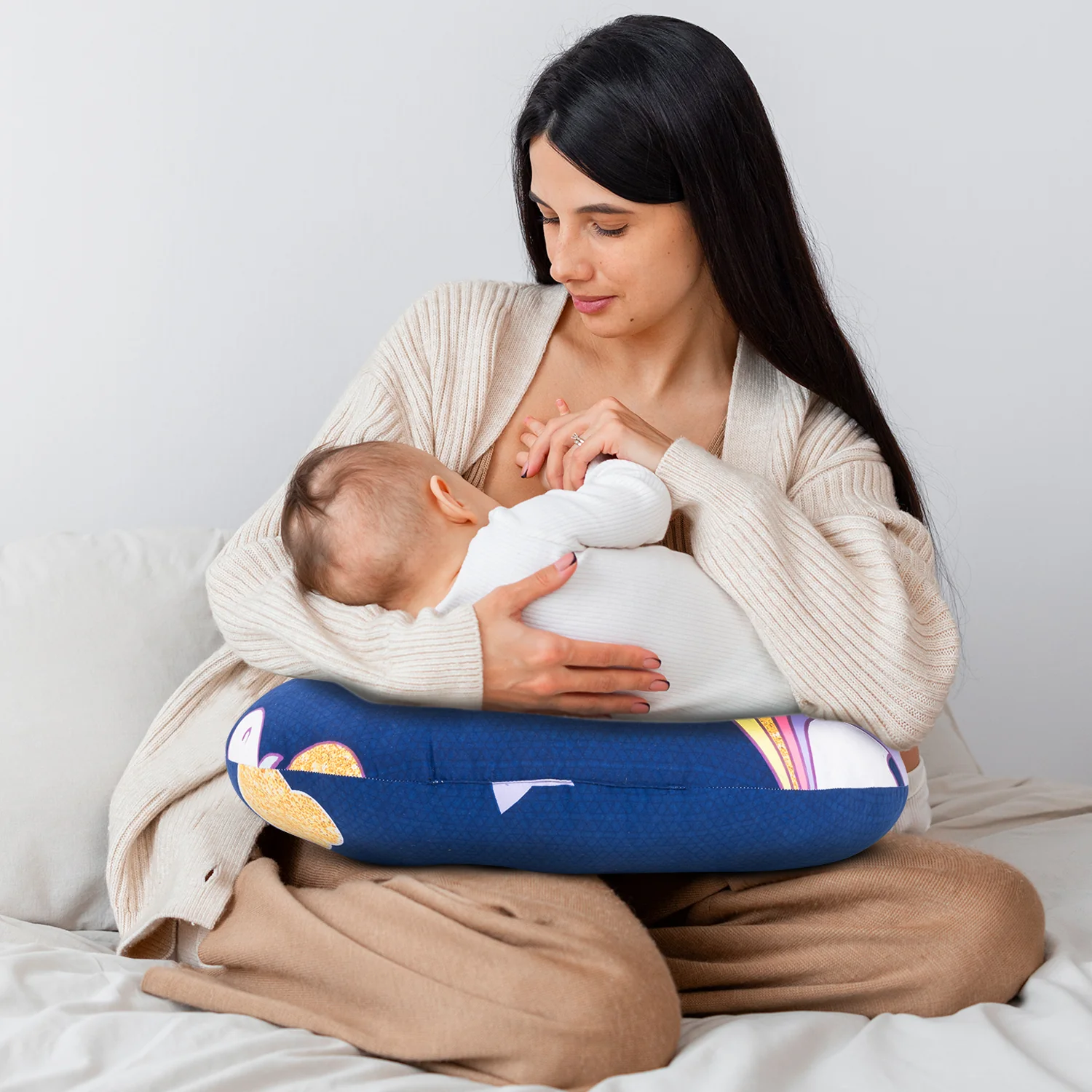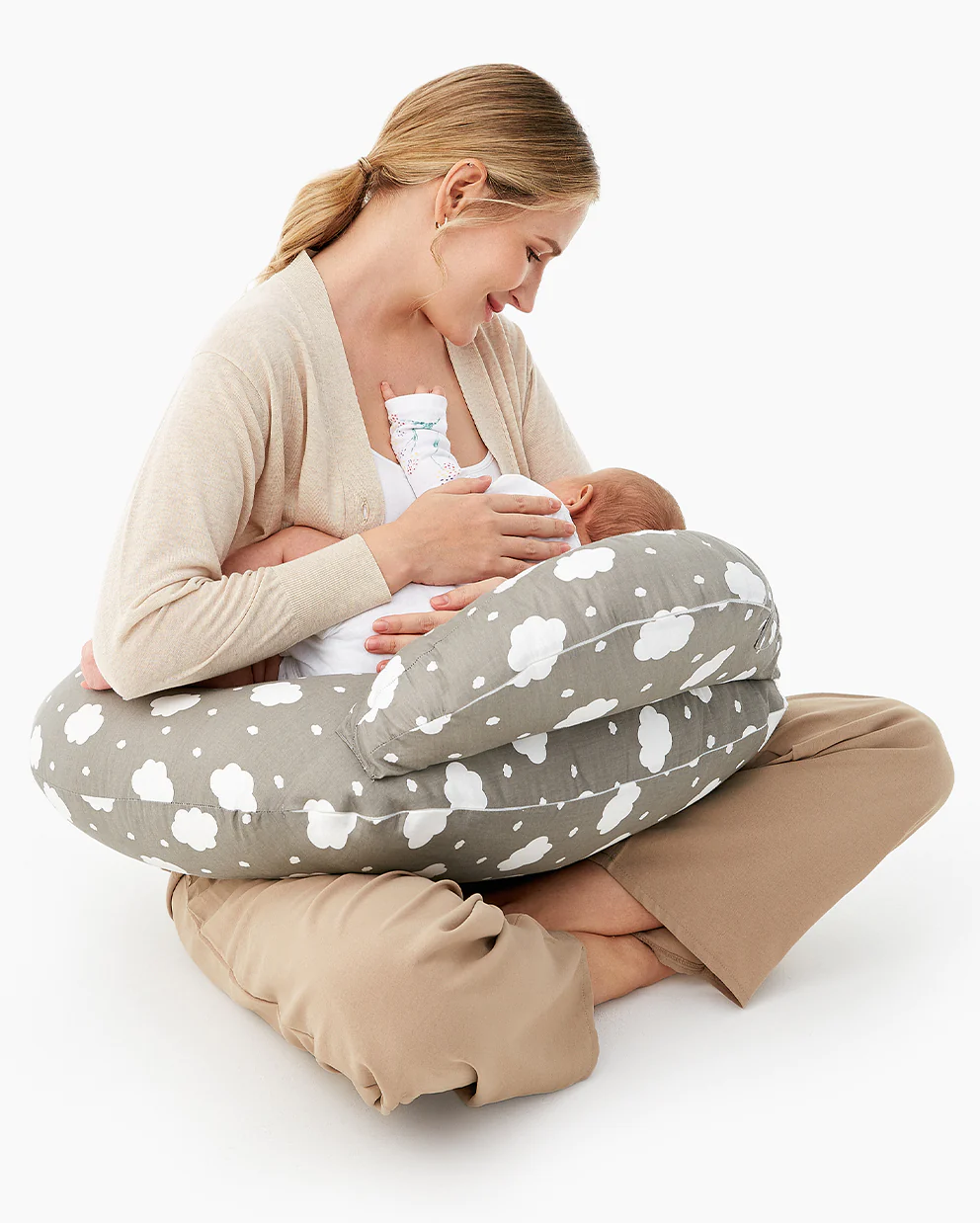Baby Feeding Pillow: Comfort for Mom, Safety First
For new parents, navigating the world of baby products can be overwhelming. A baby feeding pillow is a common item on many registries, but is it truly necessary? This article explores the pros and cons of baby feeding pillows, along with safe alternatives to ensure feeding comfort and prioritize your baby’s safety.
What is a Baby Feeding Pillow?
A baby feeding pillow is a specialized pillow designed to provide support and comfort for mothers (or caregivers) during breastfeeding or bottle-feeding sessions. These pillows typically come in U-shaped or C-shaped forms, cradling the mother’s body and offering support for their arms, back, and neck.
Potential Benefits of Baby Feeding Pillows
While not essential for breastfeeding or bottle-feeding, some parents find baby feeding pillows offer certain advantages:
-
Improved Comfort for Mom: The pillow can help alleviate strain on the arms, shoulders, and back during feeding sessions, especially for extended nursing periods. This can be particularly helpful for mothers who are recovering from childbirth or experiencing discomfort.
-
Proper Positioning: The pillow may help position the baby at an optimal latching angle for more efficient feeding. This can be beneficial for mothers who are struggling with breastfeeding difficulties.
-
Support for Different Feeding Styles: Some feeding pillows are designed to be adjustable, allowing mothers to find a comfortable position for various feeding styles, such as the cradle hold, cross-cradle hold, or football hold.
-
Postpartum Recovery: For mothers recovering from childbirth, the pillow can provide extra support and comfort while holding their baby close.
Safety Concerns and Baby Feeding Pillows
It’s important to note that the American Academy of Pediatrics (AAP) strongly recommends against using any pillows in a baby’s crib for the first year. This recommendation is based on safety concerns, including:
-
Increased Risk of SIDS (Sudden Infant Death Syndrome): Soft objects like pillows can increase the risk of SIDS by potentially obstructing a baby’s airway or causing them to re-breathe exhaled carbon dioxide.
-
Suffocation Risk: Newborns lack the head and neck control to easily move their heads if their airway becomes obstructed by a pillow.
-
Entrapment Risk: Loose bedding, including pillows, can pose an entrapment hazard. A baby could become entangled in the pillow or bedding, restricting their movement and breathing.
Therefore, using a baby feeding pillow for a baby’s sleep is not recommended due to these safety risks.
Using Baby Feeding Pillows Safely During Feeding
While baby feeding pillows can be a helpful tool for feeding comfort, their use should be limited to supervised feeding sessions while the parent is awake and attending to the baby. Here are some safety tips to remember:
-
Never leave a baby unattended with a feeding pillow. A baby can easily roll over or become smothered by the pillow if left unsupervised.
-
Do not use the feeding pillow for co-sleeping or bed-sharing. Bed-sharing is a known risk factor for S IDS, and the presence of pillows in a co-sleeping situation further increases the dangers.
-
After feeding, always transfer the baby to a firm, crib mattress for safe sleep. A firm, flat mattress with a fitted sheet is the safest sleep surface for newborns.
Alternatives to Baby Feeding Pillows for Comfort
There are several safe and effective alternatives to baby feeding pillows that can provide comfort during feeding sessions:
-
Regular pillows: A regular bed pillow can be used for limited support under your arm while feeding.
-
Rolled towels: A rolled towel placed strategically can offer some arm and back support.
-
Feeding cushions: These small, wedge-shaped cushions can provide targeted support for the baby’s head during feeding.
-
Football hold: This feeding position requires no additional support and can be comfortable for mothers who have undergone a cesarean section.
Conclusion: Finding Comfort and Prioritizing Safety
Baby feeding pillows can offer some benefits for feeding comfort, but a safe sleep environment is paramount for your newborn. The AAP’s recommendations against using pillows in a crib are for a valid reason. There are plenty of safe and effective alternatives to promote comfort during feeding and ensure safe sleep for your baby. If you have any questions or concerns about using a feeding pillow or your baby’s feeding or sleep environment, always consult your pediatrician.
